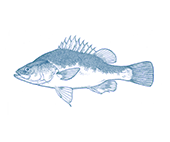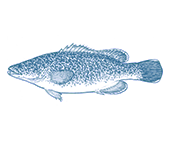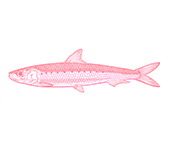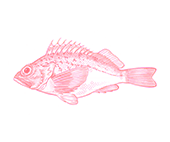




- Better Choice
Wild Caught
Region:
VIC
- Southern calamari is a fast growing, short-lived and quick to reproduce species.They are primarily caught using haul net fishing methods in Victoria.
- Stable long-term catch records indicate the Victorian southern calamari population is healthy.
- Southern calamari are mostly caught as byproduct in haul seine fisheries targeting flathead, king george whiting, mullet and garfish in Victoria.
- The fishing methods used pose a low risk to habitats or threatened marine wildlife.






To ensure they remain tender, squid and calamari should be cooked hot and fast in a pan, deep fryer or on a barbecue. Simply score, sear, and serve! Scoring with a knife in a fine crosshatch pattern allows the heat to penetrate quickly and keeps the flesh tender. When frying calamari, cook in small batches to ensure you don’t overload (and cool down) the pan, as this can result in rubbery stewed results. Calamari can also be slow cooked for hours in a sauce of tomato and wine for a delicious tender braise. Very fresh calamari can be finely sliced into ‘noodles’ and eaten raw.
- Corner Inlet Fishery, Port Philip Bay and Western Port Fishery (24t in 2022/23)
Southern calamari is a fast growing, short-lived (around 12 months) species that reproduces quickly and produces a high number of offspring. This makes them highly resilient to fishing pressure. Undertaking formal stock assessments (scientific assessments of the numbers of a species) of squid species is generally difficult for fishery managers, as reproduction is highly variable depending on environmental conditions.
Southern calamari are mostly caught as byproduct in haul seine fisheries targeting flathead, king george whiting, mullet and garfish in Victoria.
The long term stability of key fishery trends provide confidence that the Victorian population is healthy.
Measures instigated by the Corner Inlet Fishery to limit bycatch include fishing at night (which reduces seabird bycatch), fishing using net designs which help bycatch escape and the use of in water sorting of catch in their nets supporting the healthy release of unwanted catch.
‘No-take’ zones within a marine park in the region provide additional protection for marine species.
Victoria’s Corner Inlet fishers demonstrated their stewardship of the fishery when they supported formalising voluntary commitments to limit the deployment of fishing nets into becoming a compulsory requirement under the fishery’s management.


